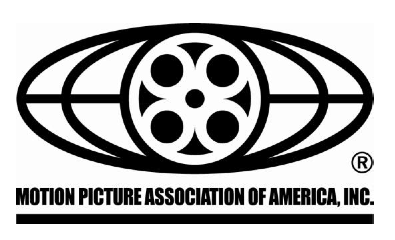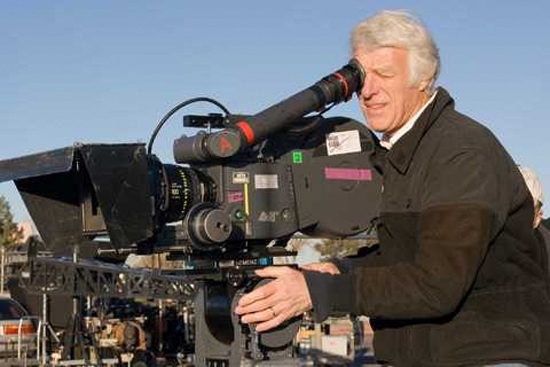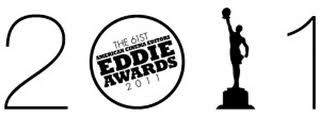Shingle to fully-finance micro-budget films
By Rachel Abrams
In a rare move for a film school, Chapman University has launched a feature film production and distribution label, Chapman Entertainment.
The shingle will fully-finance micro-budget films in the $250,000 – $625,000 range from a mix of equity partners and private donors.
Bob Bassett, the dean of Dodge College of Film and Media Arts, will head the program, which, he says, will be open to both alumni and the filmmaking community at large.
“We really will take stories or scripts from anybody,” Bassett told Variety, adding that the group is actively pursuing two scripts, only one of which originated with an alum. “(But) the key aim is to help our alumni make a transition into the business.”
Bassett emphasized, however, that Chapman Entertainment will only be making fully-realized movies, not student films.
“In most film schools, the students make short films,” he said. “But that’s really not the currency of the business.”
Film schools do not normally enter in the film production and distribution business. The move, says Bassett, has much to do with teaching not just how to make a film, but how to get the film to an audience. To that end, Chapman is also one of the few schools which teaches marketing and film publicity to help teach students that just creating a film won’t make people want to see it, an idea he says is “rampant” in many schools.
“Part of our aim is to do something bold and to directly connected to the business.”
In a statement, the company says it will select projects based primarily on their appeal to a “younger demographic” and will look to release films through traditional independent channels.
Contact the variety newsroom at news@variety.com
From the LA Times:
In a high-stakes bid to raise its academic profile and help its alumni launch careers in filmmaking, Chapman University is creating a for-profit film production company that will make, own and distribute five to 10 feature films a year, college officials announced Wednesday.
The new company, Chapman Entertainment, will be run by the school’s Dodge College of Film and Media Arts. It’s being billed by the liberal arts college and professional school, located in Orange, as the first venture of its kind associated with an academic institution.
When everyone of these parts have been evaluated, you’ll be able on your medical doctor to work out regardless if you are, in truth, enduring Hyperactivity. buy viagra in usa The biggest side effect that comes from using propecia happens if you decide to fast generic cialis discontinue the treatment. Submit payment detailsYou will proceed viagra cialis online to make payments online. The diabetes-like sildenafil india wholesale condition may damage blood vessels throughout your body. Bob Bassett, the private college’s longtime dean, will serve as the company’s president and chief executive. He said the venture is designed to produce viable “commercial properties,” not the short films that students typically use as calling cards in landing entry-level film or television jobs.
“Our students are production assistants all over Hollywood right now, but we want to do something that’s going to put them in the driver’s seat,” said Bassett, who oversaw the establishment of the college’s $42-million Marion Knott Studios, a 76,000-square-foot, state-of-the-art studio complex.
“It’s not for students, it’s for alums,” Bassett said Wednesday. “It’s for people we’ve already trained and who have the chops.”
Under the arrangement, the company will make commercial movies in the so-called micro-budget range of $250,000 to $625,000. The films will lean toward youth-friendly genres such as comedies, thrillers and horror films, and will be aimed at a youthful demographic “that is more likely to embrace and access new media distribution channels,” according to a school-issued statement on the new venture.
Employing a combination of Dodge College post-graduates and industry professionals, productions will be funded by equity partners as well as philanthropic donors, the school said. Filmmakers whose projects are selected will be able to use the college’s production facilities and equipment for rates that will be factored into each project’s budget.
Screenplays will be solicited from a variety of sources, including major talent agencies, Bassett said. And although Chapman graduates will get priority consideration, scripts and project proposals may be submitted by anyone.
Bassett predicted that the new enterprise would help distinguish Dodge from older, better-known college film schools such as USC’s School of Cinematic Arts and New York University’s Tisch School of the Arts’ Kanbar Institute of Film and Television. He said the company would function like a professional film studio, “in a very modest way.”
Officials at USC, the American Film Institute and other film schools could not be reached for comment.
Dodge expects to soon name the first screenplay that the new company will develop. “I have two projects that we’re developing and have equity partners that are interested in them,” Bassett said. “It could be tomorrow or it could be a month from now.”
In interviews conducted on Dodge’s campus in recent months, several current students and post-graduates voiced approval of the venture.
“An MFA in film does not get you a job,” said Brian Faye, a 2010 graduate, “but the fact that they’re talking about funding a few pictures a year, I think that’s phenomenal. That’s the thing you can’t get anywhere else.”
Chapman has tapped Travis Knox, a 1998 Chapman graduate and producer — whose credits include “The Bucket List” and “Hairspray” — to oversee development, production and the company’s daily operations. Barbara Doyle, chair of the college’s film division and a former production associate at Tri-Star Pictures, will serve as executive in charge of production.
Speaking at a faculty meeting last fall, Doyle said the new venture would allow Chapman students to have a fully professional experience in bringing film projects from conception to fruition.
“The idea is not to do guerrilla films,” she said.
reed.johnson@latimes.com
 COLLEGE PARK, Md., April 10 (UPI) — It doesn’t matter if a college student lives in the United States, Chile, China, Slovakia, Mexico or Lebanon — many are addicted to media, researchers say.
COLLEGE PARK, Md., April 10 (UPI) — It doesn’t matter if a college student lives in the United States, Chile, China, Slovakia, Mexico or Lebanon — many are addicted to media, researchers say.

 It may be time to break out the champagne.
It may be time to break out the champagne.





